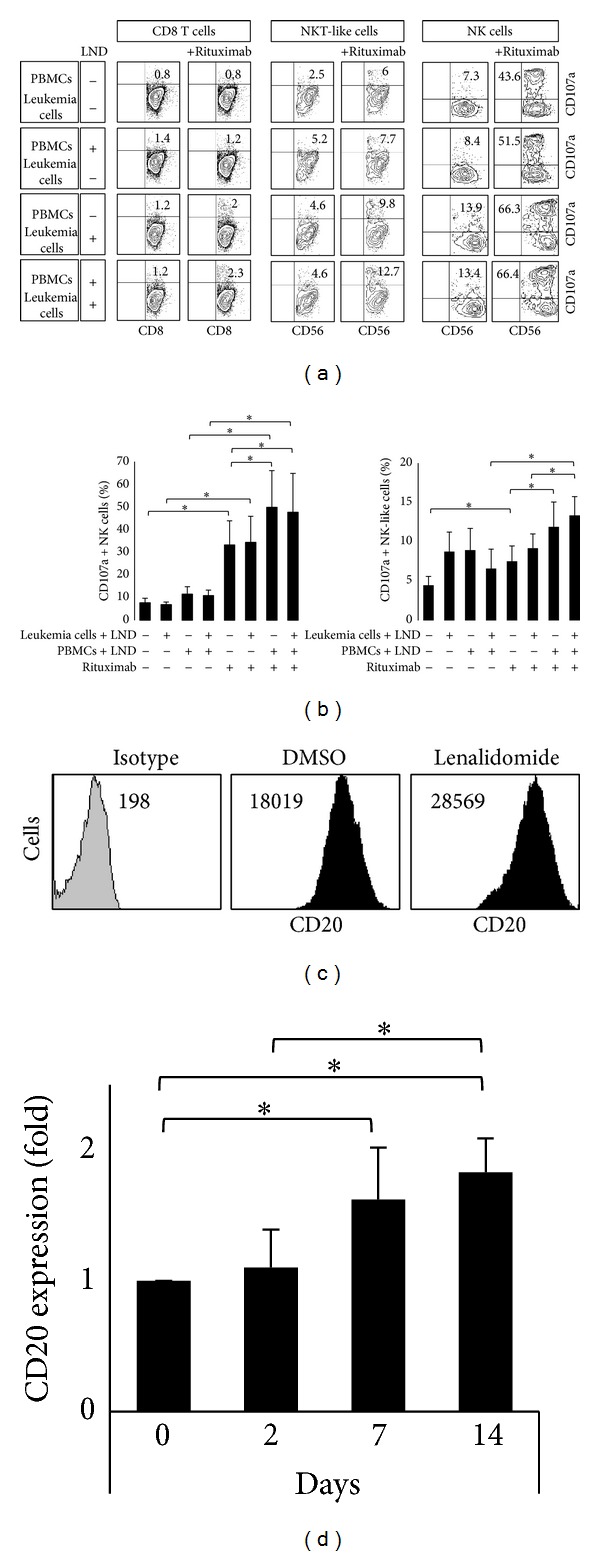Figure 7.

Lenalidomide enhanced natural cytotoxicity and ADCC against primary leukemia cells. (a) PBMCs from healthy donors (n = 4) and purified leukemia cells (>90% of purity) obtained from CLL patients (n = 4) were treated with 1 μM lenalidomide or DMSO for 14 days. Lenalidomide and DMSO-stimulated PBMCs were cocultured with both lenalidomide and DMSO-stimulated leukemia cells at 5 : 1 E : T ratio in the presence or absence of rituximab (20 μg/mL). The expression of CD107a was evaluated in NK cells (CD3−CD56+), CD8 T cells (CD3+CD8+), and NKT-like cells (CD3+CD8+CD56+) by flow cytometry. Representative dot plots showing CD107a expression on CD8, NKT-like, and NK cells of one representative experiment are shown. The numbers represent the percentage of CD107a+ cells for each subset analyzed. (b) The figure shows the compilation of the results obtained from patients and donors. The bars represent the mean and standard deviation of the percentage of CD107a+ NK cells and NKT-like cell (*P < 0.05; Mann-Whitney U test). (c) The histograms show the analysis of CD20 expression in leukemia cells after 14 days of lenalidomide treatment of a representative patient. Numbers in the histogram are the mean fluorescence intensity (MFI). (d) PBMCs from CLL patients (n = 4) were cultured with lenalidomide (1 μM) for 2, 7, and 14 days and the expression of CD20 was analyzed on B cells (gated as CD5+/CD19+) by flow cytometry. Results are expressed as the fold induction of CD20 MFI in lenalidomide-treated cells relative to the vehicle-treated control (*P < 0.05; Mann-Whitney U test).
